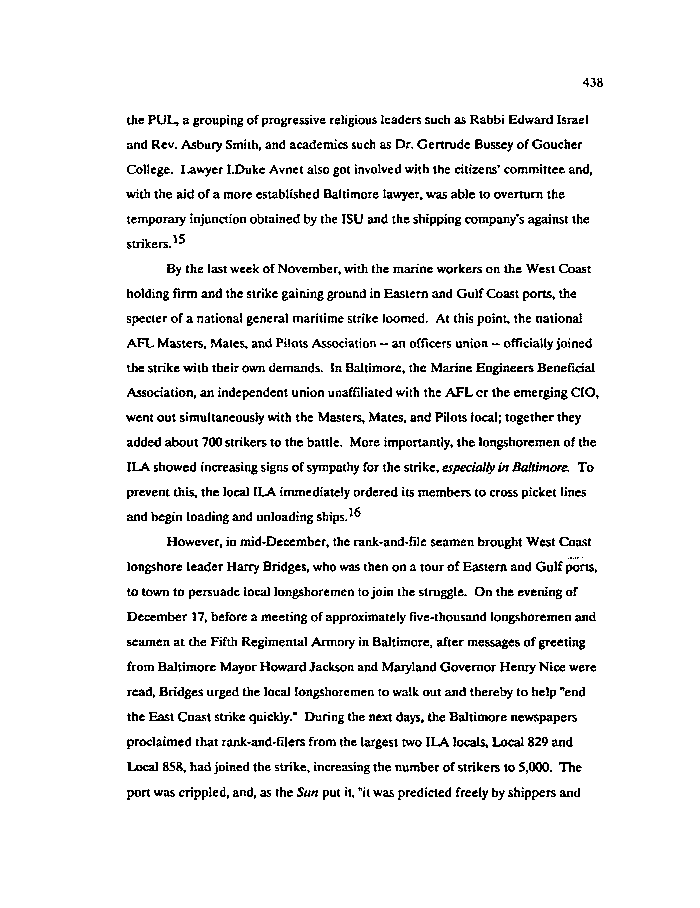|
438
the PUL, a grouping of progressive religious leaders such as Rabbi Edward Israel
and Rev. As bury Smith, and academics such as Dr. Gertrude Bussey of Goucher
College. Lawyer I.Duke Avnet also got involved with the citizens' committee and,
with the aid of a more established Baltimore lawyer, was able to overturn the
temporary injunction obtained by the ISU and the shipping company's against the
strikers.
By the last week of November, with the marine workers on the West Coast
holding firm and the strike gaining ground in Eastern and Gulf Coast ports, the
specter of a national general maritime strike loomed. At this point, the national
AFL Masters, Mates, and Pilots Association — an officers union — officially joined
the strike with their own demands. In Baltimore, the Marine Engineers Beneficial
Association, an independent union unaffiliated with the AFL cr the emerging CIO,
went out simultaneously with the Masters, Mates, and Pilots local; together they
added about 700 strikers to the battle. More importantly, the longshoremen of the
ILA showed increasing signs of sympathy for the strike, especially in Baltimore. To
prevent this, the local ILA immediately ordered its members to cross picket lines
and begin loading and unloading ships.1"
However, in mid-December, the rank-and-file seamen brought West Coast
longshore leader Harry Bridges, who was then on a tour of Eastern and Gulf ports,
to town to persuade local longshoremen to join the struggle. On the evening of
December 17, before a meeting of approximately five-thousand longshoremen and
seamen at the Fifth Regimental Armory in Baltimore, after messages of greeting
from Baltimore Mayor Howard Jackson and Maryland Governor Henry Nice were
read, Bridges urged the local longshoremen to walk out and thereby to help "end
the East Coast strike quickly." During the next days, the Baltimore newspapers
proclaimed that rank-and-filers from the largest two ILA locals, Local 829 and
Local 858, had joined the strike, increasing the number of strikers to 5,000. The
port was crippled, and, as the Sun put it, "it was predicted freely by shippers and
|

